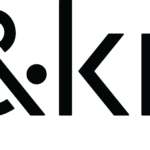In Europe, 35% of people who leave jobs cite unsustainable performance expectations as a key negative.
This push for performance excellence permeates many performance discussions – and it’s often inbred in each of us. In a US study author Marcus Buckingham asked parents their feedback focus for their children. Sadly, 77% stated that if their child’s school report had four great grades and 1 poor grade they would focus on a bad grade instead of celebrating other good grades.
We live in an “fixing” environment – where we are trained to fix weaknesses. From a human perspective it’s hard to feel sufficient when basically all performance conversions focus on what we are not good at. This is an outdated leadership approach. Leveraging the strengths inside our team is the way to success and to engagement.
Step 1: Use a tool to identify individual strengths of your team members. Check out The Strengths Deck, designed by Daria Williamson or the Strengths Profile by Cappfinity. A team member might discover they have a strength in creative problem-solving and develop an action plan to take on more projects that require innovative solutions.
Step 2: Once you understand individual strengths, how could you design projects, use cross functional teams and set stretch tasks to lean into each person’s strengths? How engaging would it be if opportunities that your team love were designed and integrated into their week!
Step 3: Reengineer performance meetings to balanced – discuss strengths and opportunities for improvement. Ensure those discussions are constructive.
Step 4: Track progress, celebrate strength-based wins. Keep looking for ways to maximise strengths within your team.




